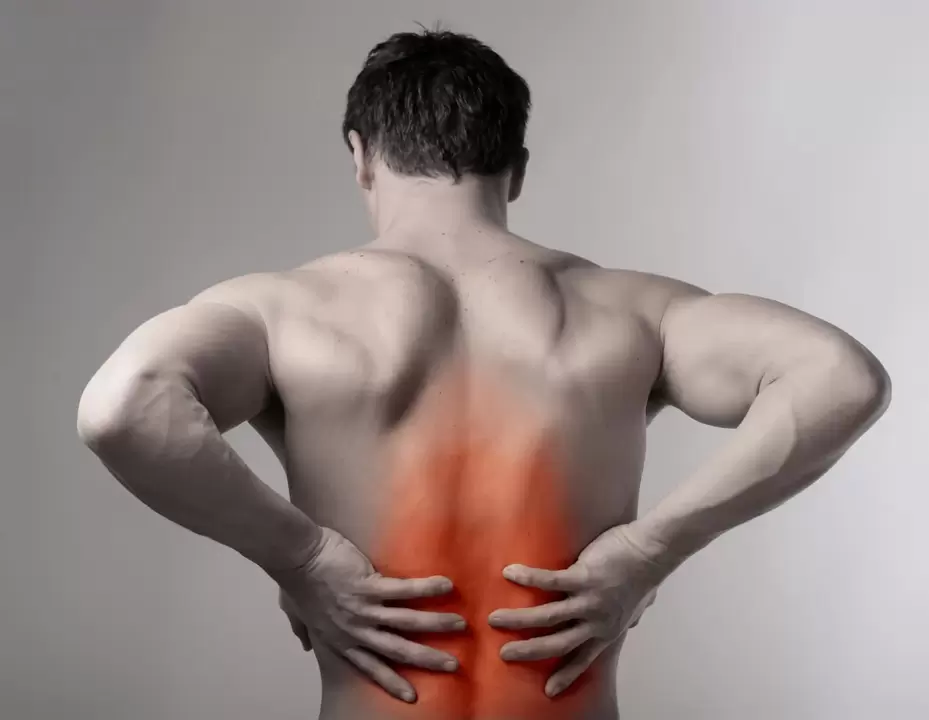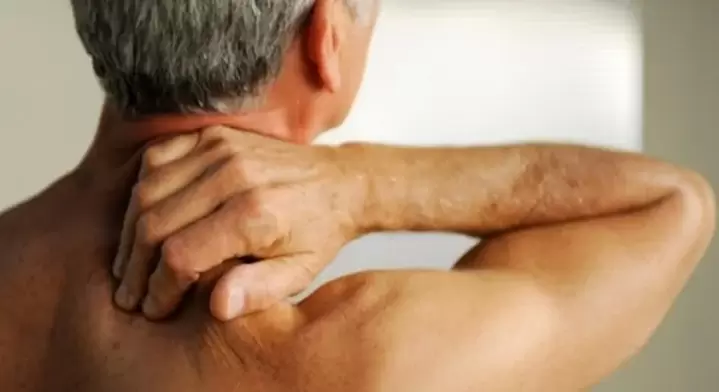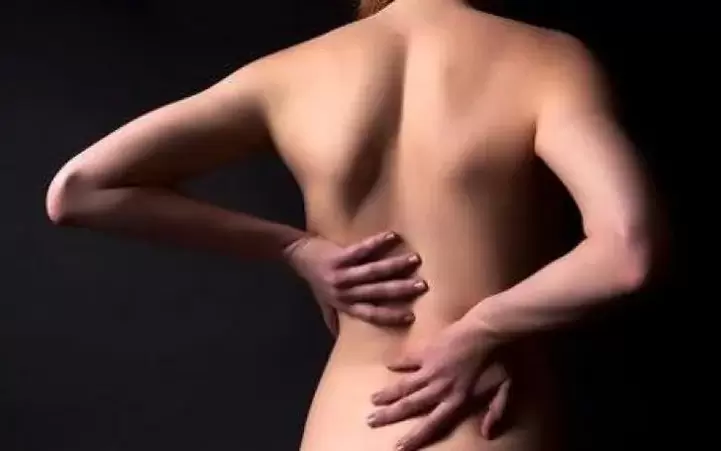
Osteochondrosis is a disease based on degenerative-dystrophic changes that occur in the intervertebral discs, vertebrae and small joints of the spine. Osteochondrosis is a faithful companion of the elderly. However, young people are being diagnosed more and more frequently, which is probably due to predominantly sedentary work, an unhealthy lifestyle and little physical activity. We can assume that most of the adult population shows signs of osteochondrosis.
The reasons
The elasticity of the spine, its mobility and resilience depend primarily on the condition of the intervertebral discs. The pathological process in osteochondrosis is based on malnutrition of the structures of the spine, in particular the intervertebral disc. This leads to changes in the normal tissue structure, the disc loses its elasticity, its shape changes. Such metamorphoses lead to narrowing of the intervertebral discs and, as a result, to compression of the nerve roots. In fact, these changes explain the appearance of neurological symptoms, especially back pain in osteochondrosis.
In the future, degenerative processes appear in the small joints of the spine, bone growths are formed on the surface of the vertebrae. All these changes lead to a decrease in the flexibility of the spine.
Similar transformations of cartilage and bone tissue are the result of the body's physiological aging process. However, under the influence of certain unfavorable factors, dystrophic changes in the intervertebral joints occur prematurely. These factors include:

- Obesity;
- lack of exercise;
- Hard physical work;
- Occupations that are characterized by prolonged standing or sitting during working hours;
- flat feet, valgus deformity of the feet;
- spinal deformities;
- autoimmune diseases of connective tissue;
- Fluctuations in the hormonal background (pregnancy, menopause);
- play great sports;
- emphasize;
- spinal injuries etc.
Types of osteochondrosis
The features of the clinical picture of the disease depend on which particular segment of the spine the pathological process occurred.There are the following types of osteochondrosis:
- cervical;
- Thorax;
- lumbar spine.
Cervical osteochondrosis
Osteochondrosis of the cervical region is common. The muscular skeleton of the neck is rather poorly developed, therefore, against the background of osteochondrosis, even with a slight load, the vertebrae are displaced, thereby compressing the vessels and nerves of the neck. This explains the peculiarities of the clinical picture in osteochondrosis of the cervical region.
So, the main signs of cervical osteochondrosis are:
- Constant pain in the neck and back of the head aggravated by movement in the neck;
- pain of the hemicranial type - in one hemisphere;
- dizziness, tinnitus;
- pain in hands;
- Numbness and tingling in hands.
Thoracic osteochondrosis
Defeat of osteochondrosis of the chest region is quite rare. The main condition for the development of the disease is the presence of spinal deformities.
Signs of thoracic osteochondrosis:
- Dull, aching pain in chest, often girdle in nature ;
- Increased pain when turning the body, sneezing, coughing, laughing;
- Visceral pain in cardiac region, right hypochondrium, abdomen;
- Numbness, paresthesia in the skin of the chest.
Lumbar osteochondrosis
The most common variant of osteochondrosis. This is probably because most of the stress falls directly on the lumbar spine. Symptoms of lumbar osteochondrosis:
- Aching, less often acute, lower back pain that increases with movement or prolonged exposure to a static position;
- feeling of stiffness in the lower back;
- To relieve pain, a person takes a forced position;
- Aching or stabbing pains (like lumbago) in the buttocks, thighs, lower legs;
- Tingling, paresthesia in the legs.
%20with%20lumbar%20osteochondrosis.webp)
Diagnosis osteochondrosis
To detect osteochondrosis, radiation methods are used: X-ray, computer and magnetic resonance imaging of the spine. The most characteristic and, most importantly, early sign of osteochondrosis is a decrease in the height of the intervertebral space.
In the later stages of the degenerative process, marginal growths (osteophytes) appear on the surface of the vertebrae. They are easier to see on lateral x-rays because the osteophytes are in front of and behind the vertebrae.
In addition, with osteochondrosis, the bodies of adjacent vertebrae are displaced, which can also be determined on an X-ray.
Treatment of osteochondrosis
Treatment of osteochondrosis is more effective the earlier it was started. As already mentioned, osteochondrosis is a change in the structure of the intervertebral discs, vertebrae. Unfortunately, many people ignore back pain for a long time and do not consult a doctor in time, missing the moment when it is still possible to stop the pathological process.
Treatment of osteochondrosis is carried out with medication, physiotherapeutic exercises, massage and surgery.
Medical therapy:
- Non-steroidal anti-inflammatory drugs in the form of tablets, ointments, injections for pain relief;
- muscle relaxants;
- Chondroprotectors - promote regeneration of the affected cartilage;
- vitamin and mineral complexes;
- vasodilator drugs;
- Drugs that normalize tissue metabolism.
After eliminating the exacerbation of the disease, you should proceed to rehabilitation. So, physiotherapy is a very important aspect in the fight against osteochondrosis. Performing certain exercises contributes to the formation of a muscular corset. This is extremely important, because thanks to a strong muscular corset, the physical stress is distributed evenly along the spine. With regular performance of a set of exercises, the stiffness in the spine disappears, and the range of motion increases. Massage, physical therapy, reflexology, and spinal traction help enhance the effects of physical therapy exercises.
If there are complications in the form of an intervertebral hernia or sciatica, and conservative treatment fails, they resort to surgical intervention. The aim of the surgical treatment is to eliminate the compression of the nerve roots and blood vessels and to stabilize the structure of the intervertebral disc or vertebrae.
Treatment of osteochondrosis at home
Folk remedies help relieve the symptoms of osteochondrosis, but in no case can they replace the main treatment. You can find a variety of alternative treatments online, but not all are safe. Therefore, be sure to consult your doctor.
Traditional medicine

The general principle of folk treatment of osteochondrosis is the use of substances that have an irritating effect. As a result, there is an improvement in blood supply to a specific area of the body, as well as a reduction in pain.
Such a grating recipe is known in folk medicine: mix 0. 25 cups of vodka with 0. 5 cups of honey, add 0. 75 cups of grated radish and two tablespoons of salt. With the resulting mixture, the offending area of \u200b\u200bthe back must be rubbed twice a day. The procedure must be repeated within a week.
To eliminate pain, you can put a potato compress on your back. Grated raw potatoes must be mixed with honey in equal proportions. Then wrap the resulting mixture in gauze, fasten it at the back and wrap it with a scarf. You can also use a compress with burdock. To prepare it, pour a glass of boiling water over a tablespoon of finely chopped burdock leaves. Wrap the mixture in gauze and apply to the back for half an hour. After removing the compress, be sure to wrap your back with a warm scarf.
It's even easier: grate radishes, put them in a cotton stocking and put them back on.
Note:It is important to be careful when using folk remedies and not to touch your face with your hands. Radish and other plants can cause corneal burns if they come into contact with the eyes.
physical therapy
Physical exercises can only be done outside of periods of exacerbation. With acute pain, you should refrain from gymnastics, as this will only lead to increased pain.
An example exercise set might look like this:
- Lie on your back and straighten your legs. Pull the toe of the right foot toward you and the toe of the left foot away from you. This must be done in order.
- Lie on your back and place your hands behind the back of your head. The legs must be brought together and bent at the knees. The knees should be bent to the left side and the head should be turned in the opposite direction. Just hold on for a few seconds. Then move your knees to the right and your head to the left.
- Lie on your back with your arms along your body. You need to bend your knees and raise your pelvis. Remain in this position for a few seconds. As you exhale, lower your pelvis.
- Roll onto your side. Straighten your top leg and swing it back and forth.
- Starting position on all fours. Arch your back, hold this for just a few seconds, and then arch your lower back.
- Roll onto your back. Draw the bent left knee towards the right elbow and then vice versa.




























